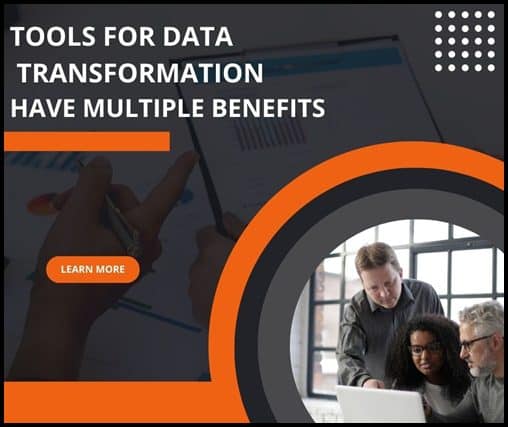Developing a viable product from unstructured data, improving customer retention, and reporting on regulations are some of the pressing issues facing companies today. Organizing data sprawled over a variety of geographic regions and dispersed across several systems becomes more difficult when these challenges are not addressed. With ETL tool for big data that integrate information stored in different systems, firms can overcome such issues by breaking down data silos and fragmentation.
Tools that facilitate ETL
Data fragmentation issues can be effectively addressed with ETL tools, which offer many benefits. In order to provide IT teams with enhanced connectivity, these tools can enable them to modify data sources and applications without having to rebuild the integration layer. Information solutions can help organizations simplify regulatory reporting, improve customer journeys, reach target audiences, and boost revenue. There are a number of benefits to consider:
Reporting requirements
Following the financial crisis of 2008, there were many laws, regulations, and rules that have been implemented. Data must be pulled, cleaned, reconciled, and standardized by firms in order to meet the statutory requirements. By offering features for data virtualization, data mapping, data mapping, and data structuring, the ETL tools make regulatory reporting easier.
Understanding your customers from every angle
Many organizations struggle with obtaining a 360-degree view of their customers, which includes their preferences, interests, likes, dislikes, and buying patterns. Business leaders, business partners, and stakeholders benefit from ETL tools that provide a customized view to improve client interactions.
Makes it possible to make data-driven decisions
Predictive algorithms are integrated into ETL tools to foster data-driven decision making across organizations. Creating a massive data warehouse with data virtualization allows an organization to access virtually every data element.
Managing your data effectively
The Data Management initiatives are bolstered by REST APIs and Any-to-Any connectivity. The Internet of Things (IoT) provides APIs that integrate legacy data with cloud, web, and other relevant data sources. In addition, this optimizes the integration architecture and the infrastructure altogether.
Everything is integrated
A large number of hybrid systems can be interconnected with ETL Tools. With such features, new initiatives can be launched quickly and data can be unearthed within the organization without requiring a lot of coding. This tool is recommended for companies that have a range of hybrid systems and applications.
Prior to purchasing ETL Tools, here are some steps you should take:
- This section lists the operating systems that the ETL software supports
- The tool processed how many GB of data (in GB) during a certain timeframe?
- Make sure the ETL software is compatible with the types of data sources.
- Make sure you are receiving the requested data in the desired format (e.g., both Text and CSV, XML, or a database, etc).
- SQL, EDI, HIPAA, ACORD AL3, any Fixed-Length file format, or any other format, including Oracle, MySQL, SQL Suite, DB2, Sybase.
- Better performance can be achieved with web-based ETL tools.
- By defining data validation rules in processes, data validation rules will be enforced.
Establish Formal Mapping Rules And Document Data Flows
Following the evaluation process, the customer will typically request three or four ETL vendors to perform a proof-of-concept. As a result, he would be able to compare products in his own environment with data and business data of his own. Based on the findings according to the exercise, the customer can make their final decision regarding the product that is most suitable.

Leave a Reply
You must be logged in to post a comment.